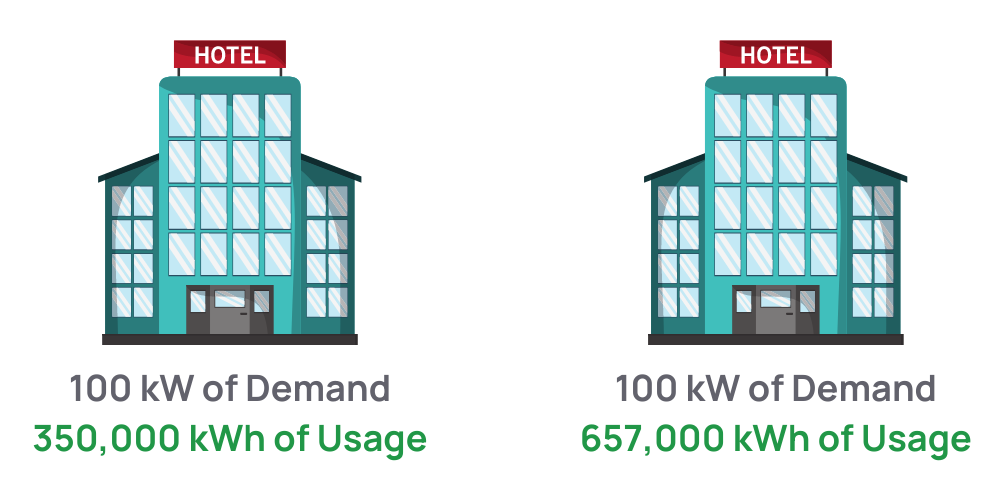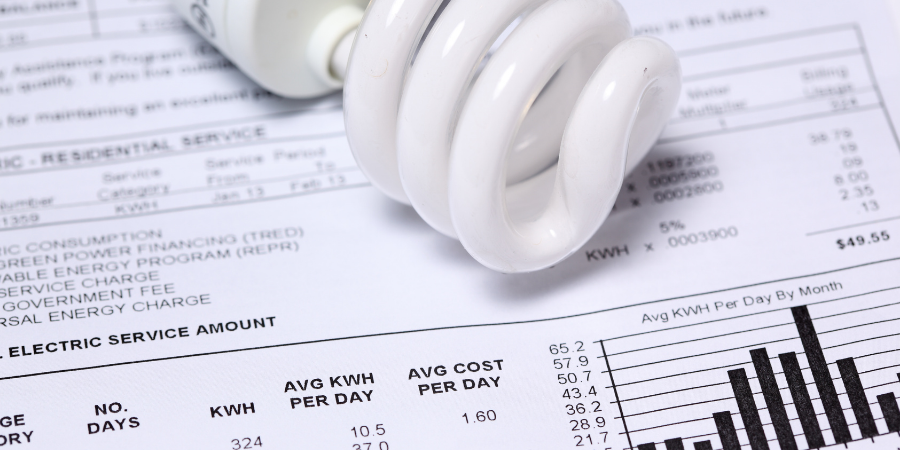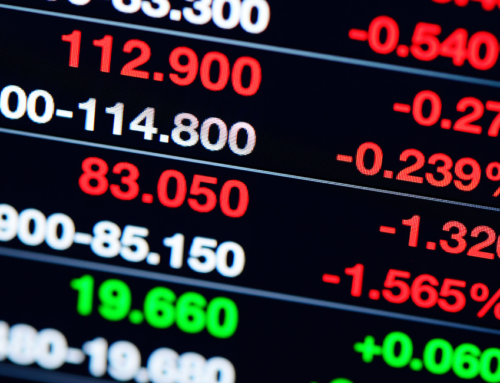At a Glance:
Understanding Load Factor (LF) is critical to being a successful energy broker. In the retail energy space, LF is an important metric when reviewing electricity pricing. High LF means lower rates from suppliers, which translates to lower prices for your customers.
In this article, you will learn:
What Is Load Factor?
Electric Load Factor is a calculation used in the retail energy business to quickly determine the cost profile (cost to serve) for a particular account based on their energy consumption (kWh) in relation to their demand (kW). LF is generally measured using a 12-month analysis of Consumption and Demand (see below).
When evaluating the anatomy of an electric bill, you might notice that part of the retail electricity supply rate, in deregulated energy states, consists of a capacity charge. And since energy capacity is calculated based on a building’s total peak energy demand, higher demand related to consumption means higher energy costs and lower demand related to consumption means lower energy costs.
To better understand how it works, let’s take a closer look at the two main components we use to calculate LF.
- Energy Consumption: How much electricity was used over a period of time. We measure this in kWh (usage)
- Energy Demand/Capacity: What was the most amount of energy being used at any given moment? We measure this in kW (demand)
A simple calculation using these two components can give you a good view of a customer’s usage profile and is a quick way to determine what they can expect to pay for their electricity supply. Simply stated, LF is a measurement of the amount of energy used over a period of time in relation to the highest demand in that same period.
Let’s review a real-life scenario using two seemingly “identical” hotels.

- Electricity = 350,000 kWh x $0.035 = $12,250
- Capacity = 100 kW x $0.20 x 365 days = $7,300
- Total Cost = $19,550 / 350,000kwh = $0.0558 per kWh
- Electricity = 657,000 kWh x $0.035 = $22,995
- Capacity = 100 kW x $0.20 x 365 days = $7,300
- Total Cost = $30,295 / 657,000kwh = $0.0461 per kWh
Although Hotel 2 is using more kWh’s, its total cost per kWh is less. Since the capacity costs between both hotels are identical (based on 100 kW of demand), the supplier can spread those costs across more kWh’s with Hotel 2, hence, lowering the total price per kwh.
How Is Load Factor Calculated?
Now let’s review the actual LF calculation using the example above. We will see that Hotel 2, which has a cheaper rate per kWh, has a higher LF, and Hotel 1 has a lower LF. Remember, LF is a measurement of the amount of energy used over a period of time in relation to the highest demand in that same period. In the Hotel example, we are measuring the annual usage over 12 months (or 8760 hours which is the total hours in a year).
- Hotel 1 = 350,000 kWh / (100 kW * 8760) = 40% LF
- Hotel 2 = 657,000 kWh / (100 kW * 8760) = 75% LF
Another way to consider the load factor calculation is to focus on the capacity costs related to each hotel. Capacity costs are calculated using the total peak demand multiplied by the capacity rate. Because both hotels in our example have the same peak demand (100 kW), they have identical capacity costs.
So why are their load factor ratings different?
Remember, retail energy suppliers usually charge customers in dollars per kWh. And since capacity costs are part of the retail energy supply rate, we need to divide the total capacity cost by the hotel’s annual kWh to calculate how much of the supply rate goes towards capacity.
If Hotel 1 has less kWh usage than Hotel 2, the capacity rates in $/kWh will be quite different. Sticking to our same example, let’s explore the differences in capacity costs in $/kWh for both hotels below:
Capacity Costs for Hotel 1
- 350,000 kWh
- Capacity = 100 kW x $0.20 x 365 days = $7,300
- Capacity Cost = $7,300 / 350,000kwh = $0.022 per kWh
Capacity Costs for Hotel 2
- 657,000 kWh
- Capacity = 100 kW x $0.20 x 365 days = $7,300
- Capacity Cost = $7,300 / 657,000kwh = $0.011 per kWh
In this example, because Hotel 2’s annual kWh usage is twice as much as Hotel 1’s, the capacity cost is exactly half of that of Hotel 1. This is why a higher load factor equals lower electricity rates.
Why Is Load Factor Important?
Load Factor is important in retail electricity pricing for so many reasons. First, it is a quick way for suppliers to determine their total costs for a particular customer without having to manually calculate each component of the electricity rate. Also, Load Factor allows energy brokers a way to determine where and how to price their customers. Typically, customers with high Load Factor ratings (above 50%) should always be custom priced with suppliers. Others, with lower ratings, can be placed on a supplier matrix.
For customers, understanding your load factor rating can be a great start to energy savings. In fact, if you’re considering hiring an energy broker to develop an energy strategy for your business, this can be a great place to start. Finding ways to improve your load factor rating can mean lower electricity supply rates and even lower energy usage for your business. This will ultimately allow you to pay less for energy expenses. Let’s explore some tips for reducing peak energy demand, improving energy efficiency, and increasing your load factor rating.
Increasing Your Load Factor Rating (High vs. Low Load Factor)
Keeping in mind that load factor is a calculation used to determine how a building’s peak energy demand relates to its energy usage in kWh, there are a few ways to improve load factor. Let’s explore both options below:
Consistent Energy Usage
The easiest way to improve your load factor rating is to use energy more consistently in your building. Sometimes this is not an option for certain business operations, but the more consistent your energy usage is over time the better your load factor rating.
Reduce Peak Demand
The more challenging, but more effective way to improve load factor ratings is to reduce peak demand during the Summer months. Capacity charges, which directly impact load factor ratings, are measured using your building’s peak demand in the Summer months. Finding ways to reduce energy usage or demand during these periods can greatly improve your rating and allow you to save on energy. Here are some tips for reducing demand:
- Sign up for a demand response program
- Do an energy audit to find opportunities
- Develop an energy efficiency plan
- Install LED lighting and other energy-efficient motors
- Fine-tune your building automation system
How Can I Calculate Load Factor On My Own?
In order to accurately calculate Load Factor the same way the suppliers do, you need certain data from your customer or their utility company. In many markets, costs for capacity are calculated based on peak demand averages in the summer and a kW rating (or capacity tag) is assigned to the customer’s account each year. In order to understand the actual Load Factor % for your customer, you need that data. Luckily, Diversegy has access to that data and tools to help you calculate Load Factor
A simple way to roughly estimate a customer’s load factor is to use their peak kW reading from the highest summer month and perform the calculation found above. Typically, utility companies will insert charts on electric bills that have this data.
How Does Load Factor Apply To My Energy Broker Business?
Understanding Load Factor is critical to your energy broker business – especially during times when market prices are high. Knowing how to identify customers with high Load Factor ratings is key to getting better pricing from suppliers. Sometimes, customers with poor Load Factor ratings can be helped by grouping them with others who have higher ratings. Be careful, though! Too many low-rated customers grouped with high-rated customers can negatively impact the price for the customers with higher ratings.
It is critical to understand load factor in order to become a successful energy broker. And, guiding your customers through plans to become more efficient and reduce peak demand in the Summer can be a great way to add extra value and make your relationship stronger with your energy customers.
Load factor is the starting point with each energy deal. You must first calculate your customer’s load factor, or send your customer’s electric bill to your energy brokerage company to perform the calculator for you. The load factor rating will tell you where to go to find the best retail energy pricing and how to structure an energy contract to meet your customer’s needs.
Want to learn more about using Load Factor to earn more energy income? Contact us today to learn about our sales partner program.
Need Help With Your Load Factor?
Whether you are a commercial energy customer looking to save money on your energy bills, or an energy broker trying to find better rates for your customers, we can help. Our team has the industry expertise and tools needed to help you quickly calculate load factor ratings and find energy suppliers with favorable pricing. Contact us today to learn more.


